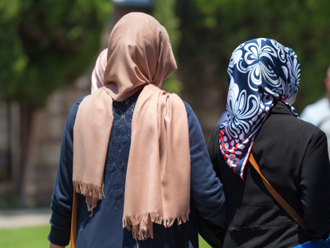
Unbecoming but entirely real, human beings have mastered the skills to eliminate each other in droves, unaware that such killings disgrace all of us. The 20th century, perhaps one of the bloodiest in human history, saw at least 150 to 160 million individuals killed in various conflicts, including an estimated 60 million who perished during the Second World War over the short span of four years.
During the past 14 years, nearly two million human beings have lost their lives in wars that spanned the globe, with a heavy concentration in the Arab world where at least 1.5 million perished. When will the killings stop?
Admittedly, and without any disparagement on the value of Ukrainians who died in 2014 after Russia invaded and occupied Crimea and parts of Eastern Ukraine, a toll of at least 4,300 paled in comparison with, for example, the nearly 45,000 who lost their lives in Afghanistan since 2001 or the 36,000 Pakistanis who paid the ultimate price in the post-2004 clashes that pitted them against the Taliban in the so-called war on Al Qaida. Likewise, the conflict in Guinea after 2000, the fighting in the Ivory Coast after 2009, both of which resulted in more than 4,000 getting killed, were mercifully less bloody than the festering attacks in the Democratic Republic of Congo, where Human Rights Watch estimated that at least 60,000 were killed between 2000 and 2007.
The list of similar atrocities is long, with the 9/11 terrorist attacks against the US in 2001 causing about 3,000 deaths; the Mexico drug war after 2006 recording 47,500 deaths; the three Israeli assaults on the Gaza Strip between 2008 and 2014 resulting in close to 4,000 casualties; the revolt against Muammar Gaddafi in Libya after 2011 chronicling 30,000 deaths; the Darfur conflict in Sudan after 2003 topping 200,000 killed; and the post 2004 Al Houthi rebel strikes in Yemen resulting in the loss of more than 6,000 lives. Of course, none of these statistics topped the appalling data for Iraq and Syria, where an estimated 1.5 million have lost their lives since 2003 with no end in sight because the conflicts continue to destroy both countries.
It was worth recalling that the war for Iraq (2003-2011) was particularly gory, with 171,000 casualties listed by several official sources. Although, in reality, and based on studies conducted by such objective institutions as the British Medical Society’s Lancet journal as well as similar research efforts undertaken by the renowned Baltimore-based Johns Hopkins University, the civilian death toll most likely topped 1.2 million. In 2014, and according to the Baghdad government, at least 15,000 Iraqis were killed in the long-smouldering sectarian conflict in that hapless country. This was a conservative figure, of course, since authorities were clueless about the actual figures throughout the country, whose geography they no longer ruled. In fact, Daesh (Islamic State of Iraq and the Levant) broke Iraq apart and controlled a good chunk of its territory, although recent air assaults mounted by a coalition of 60 countries probably meant that Daesh was little more than a paper tiger.
Nevertheless, and regrettably, victims who lost their lives were reduced to mere statistics, but nowhere as badly as in Syria, where the post-2011 revolt against the regime of President Bashar Al Assad has resulted in more than 200,000 killed, with another 300,000 rendered lifeless because the country’s health system has collapsed. Many succumbed under barrel bombs dropped from helicopters or from artillery that shattered their homes, or by stray gunfire. Thousands were executed by regime forces and thousands more, especially loyal soldiers serving in the Syrian Arab Army, were murdered by rebels belonging to the more than 50 opposition groups, led by Jabhat Al Nusra, Ansar Al Sham and the stealthy Khorasan militia that seems to have conveniently disappeared after a short but significant performance when the US Director of National Intelligence, James Clapper, revealed its existence on September 18 last year.
Lamentably, more than 100,000 Arabs have died in violent conflicts during the past year, including 76,000 in Syria alone, which not only underscores intrinsic tragedies but also highlights the futility of these deaths. At its current rate, this large toll is likely to be duplicated this year because few Arab leaders concerned, led by Al Assad and Iraqi Prime Minister Haider Al Abadi, seemed ready to address the underlying political tensions in their respective countries. Neither was willing to compromise and while modest peace efforts — whether backed by the United Nations or, in the case of Damascus, by its international backer par excellence, Russia — were under way, few were optimistic.
Moscow, along with Tehran, continues to back Al Assad, which effectively means that no regime change can occur in Damascus and that, in turn, realistically signifies that no settlement among Syrian factions is possible.
Ideally, of course, Moscow and Tehran would push for a transitional government that could lead up to free and fair elections, though that was not likely to occur any time soon. Likewise, and even if Iraqi leaders were far more interested in letting others determine their fate, preoccupied as they seemed to be with corruption and growing sectarian crises, it behoved them to rise to the occasion and put an end to war.
Left unattended, both the Syria and Iraq conflicts are prone to result in a full and permanent break-up of both the countries and may result in the deaths of another 100,000 human beings this year.
Dr Joseph A. Kechichian is the author of the forthcoming Iffat Al Thunayan: An Arabian Queen, London: Sussex Academic Press, 2015.









